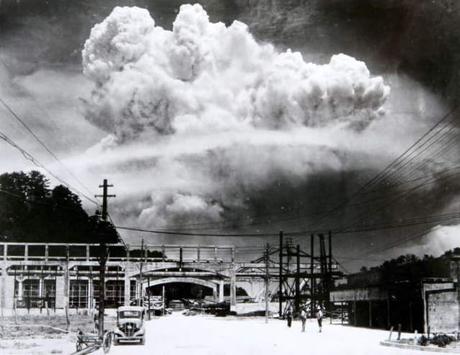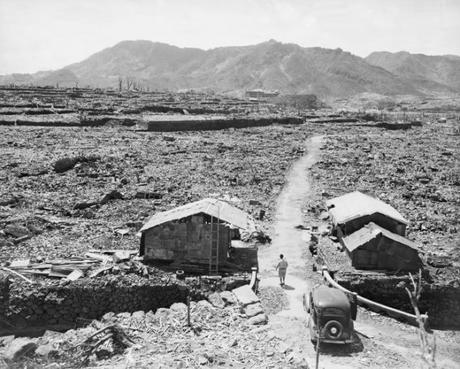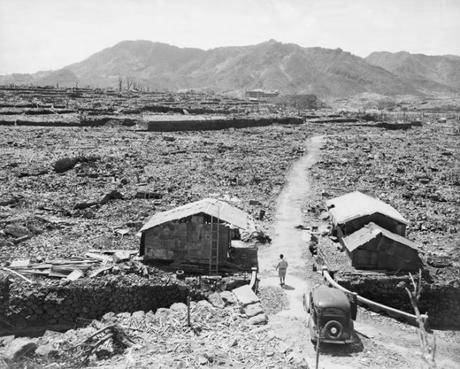Ever since America dropped a second atomic bomb on Nagasaki, Japan on August 9, 1945, the question has persisted: Was this magnitude of death and destruction really necessary to end WWII?
US leaders apparently thought so. A few days earlier, just 16 hours after the American B-29 bomber Enola Gay shocked the world by dropping the first A-bomb known as the "Little Boy" on the Japanese city of Hiroshima, the White House issued a statement from President Harry S. Truman.
In addition to introducing the world to the hitherto top-secret atomic research program known as the Manhattan Project, Truman doubled down on the threat nuclear weapons pose to Japan, America's only remaining adversary in the war. . If the Japanese did not accept the terms of unconditional surrender drafted by the Allied leaders in the Potsdam Declaration, Truman wrote, "they can expect a downpour of ruin from the air, which we never have. seen the same on this earth. "
But even as Truman released his statement, a second atomic attack was already underway. According to an order drafted at the end of July by Lieutenant General Leslie Groves of the US Army Corps of Engineers, director of the Manhattan Project, the president had authorized the dropping of additional bombs on the Japanese cities of Kokura (now Kitakyushu), Niigata and Nagasaki from as time permits.
READ MORE: The Inside Story of Harry Truman and HiroshimaNagasaki was not the original target
Early on the morning of August 9, 1945, the B-29 known as the Bockscar took off from the island of Tinian in the western Pacific Ocean, carrying the nearly 10,000 pound plutonium bomb known as from "Fat Man" to Kokura, which houses a large Japanese arsenal. Finding Kokura obscured by cloud cover, the crew of the Bockscar decided to move towards their secondary target, Nagasaki.
"Fat Man", which exploded at 11:02 am local time at an altitude of 1,650 feet, killed about half as many people in Nagasaki as the uranium-based "Little Boy" had in Hiroshima three days earlier - despite an estimated force of 21 kilotons, or 40 percent more. Yet the effect was devastating: nearly 40,000 people were killed instantly and a third of the city was destroyed.
"This second demonstration of the power of the atomic bomb apparently plunged Tokyo into panic, for the next morning brought the first indication that the Japanese Empire was ready to surrender," Truman later wrote in his memoir. On August 15, Emperor Hirohito announced the unconditional surrender of Japan, ending World War II.
READ MORE: The man who survived two atomic bombs

Bilderwelt Gallery / Getty Images
Official rationale for the A-bomb: saving American lives
According to Truman and other members of his administration, the use of the atomic bomb was aimed at curtailing the war in the Pacific, preventing an American invasion of Japan and saving hundreds of thousands of American lives.
In early 1947, pressed to respond to growing criticism of the use of the atomic bomb, Secretary of War Henry Stimson wrote in Harper Magazine that in July 1945 there had been no sign of "a weakening of the Japanese resolve to fight rather than accept unconditional surrender." Meanwhile, the United States planned to intensify its sea and air blockade of Japan, increase strategic aerial bombardment and launch an invasion of the Japanese-born island in November.
"We felt that if we were to be forced to complete this plan, the major fighting would not end until late 1946, at the earliest," Stimson wrote. "I have been informed that such operations could cost more than a million victims, to the American forces alone."
READ MORE: The bombing of Hiroshima didn't just end WWII. It started the cold war

Bettmann Archives / Getty Images
The other reason? Get the attention of the Soviet Union
Despite the arguments of Stimson and others, historians have long questioned whether the United States was justified in using the atomic bomb in Japan - let alone twice. Various military and civilian officials have publicly stated that the bombing is not a military necessity. The Japanese leaders knew they had been defeated even before Hiroshima, as Secretary of State James F. Byrnes declared on August 29, 1945, and had contacted the Soviets to see if they would intervene in possible peace negotiations. Even the famous hawkish general Curtis LeMay told reporters in September 1945 that "the atomic bomb had nothing to do with the end of the war."
Statements like these have led historians such as Gar Alperovitz, author of The decision to use the atomic bomb, to suggest that the real purpose of the bomb was to gain the upper hand over the Soviet Union. According to this line of thought, the United States deployed the plutonium bomb on Nagasaki to bring out the strength of its nuclear arsenal, ensuring the nation's supremacy in the global hierarchy of power.
Others argued that the two attacks were just an experiment, to see how well the two types of atomic weapons developed by the Manhattan Project worked. Admiral William "Bull" Halsey, commander of the US Navy's Third Fleet, said in 1946 that the first atomic bomb was "a wasteful experiment ...[the scientists] had this toy and they wanted to try it out, so they ditched it.
Was a second nuclear attack necessary to force Japan to surrender? The world might never know. For his part, Truman does not appear to have wavered in his belief that the attacks were justified - although he ruled out future bombings without his express order the day after Nagasaki. "It was a terrible decision. But I made it," the 33rd President later wrote to his sister, Mary. "I took it to save 250,000 boys in America, and I would do it again under similar circumstances."
